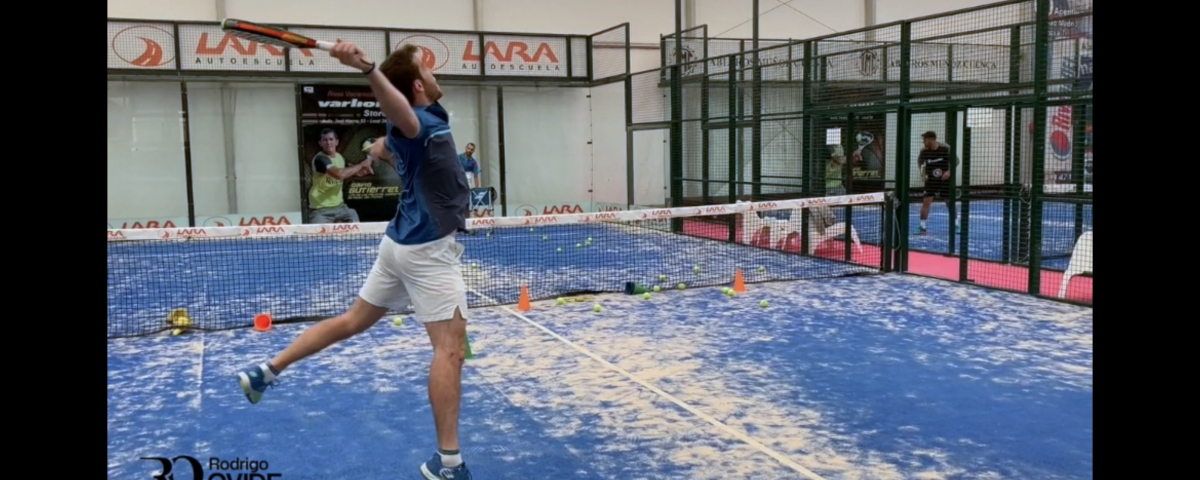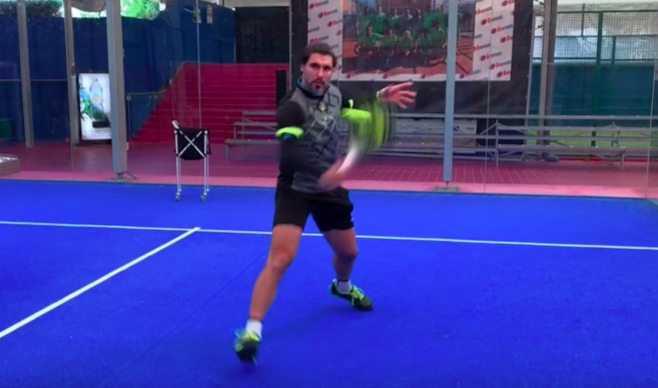HOW TO DETECT ERRORS IN THE BANDEJA

HOW TO CHOOSE THE WAY IN THE VOLLEY AND SURVIVE IT.
22 May, 2019
three keys to return in the T position.
10 July, 2019Today I will show you which aspects to consider to make corrections on a bandeja.
Our student Javi is a player on the left side, who has difficulty to be regular and consistent with his shot.
PROBLEMS THAT WE OBSERVE AT THE T TACTICAL LEVEL:
HE ALWAYS HITS VERY HARD.
THE BALL BOUNCES VERY SHORT.
THE RUGE BALL POST BANDEJA COMES VERY FAST.
TECHNICAL PROBLEM:
THE BALL IS TOO SHORT:
HE ONLY MAKES LATERAL STEPS.
HIS HIPS AND SHOULDERS ROTATION IS LITTLE.
HIS PREPARATION IS VERY LOW AND NOT VERY SOLID.
HIS IMPACT IS NOT THE RIGHT ONE FOR THE SHOT HE WANTS TO EXECUTE.
HOW WE WILL WORK IT.
Understanding and coordinating the first step towards the bandeja ensures a more natural and fluid process in the continuity of the shot. Make sure that the first step turns the hip and the shoulders well, being able to take your non-dominant arm back, transferring the weight of the body to the right leg (right-handed player).
Fulfil the fundamental requirement of having both elbows in the line or over the shoulders, being able to generate a stable movement, solid and can keep the action to the end without losing tension.
To understand and respect that the correct point of impact for this shot is more delayed and we shouldn’t hit it so in front. When delaying the impact, we will get a shot with a complete movement of the rotation, which ensures the flight of the ball, being able to generate more height to pass over the net and good depth.
AS A CONCLUSION:
Understand the pros and cons of hitting a bandeja backwards and away from the net.
When I hit so far, I have to make sure to return to my position in the volley I need “X” amount of time, for example, 3 seconds. If my bandeja goes fast and short, my opponent will hit making the ball arrive before the 3 seconds so I will volley away and down the net.
If I can generate more depth and height with less speed, I will take the ball to return those 3 seconds I need to regain my position.
If I can’t generate that time, I’ll have to get it another way, for example:
The direction: if I need 3 seconds to recover my position, those 3 seconds are equivalent to 2.5 meters to cover, so if I have to make my rival have to move those 2.5 meters that will be my recovery.
FOR THIS REASON, IT IS OF VITAL TO UNDERSTAND THAT THE BANDEJA, DEPENDING ON THE PLACE WHERE I HIT IT, COULD ATTACK OR NOT, KNOWING THAT IF I DON’T ATTACK THE PRIORITY IS TO MAINTAIN MY POSITION IN THE NET AND THAT MY RIVAL DOESN’T TAKE THE INITIATIVE WITH A COUNTERCOUP.


